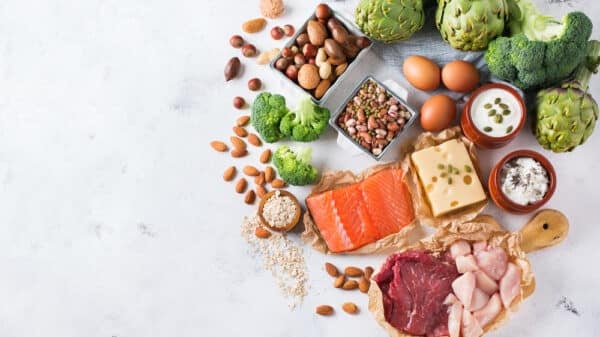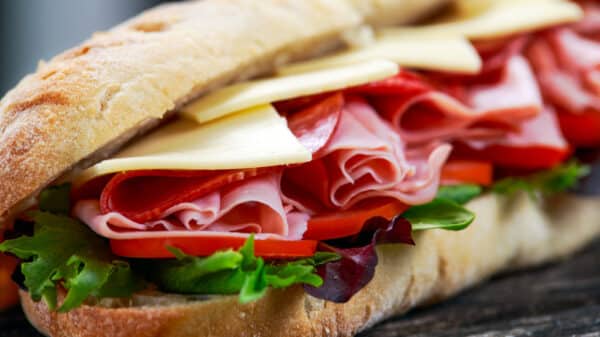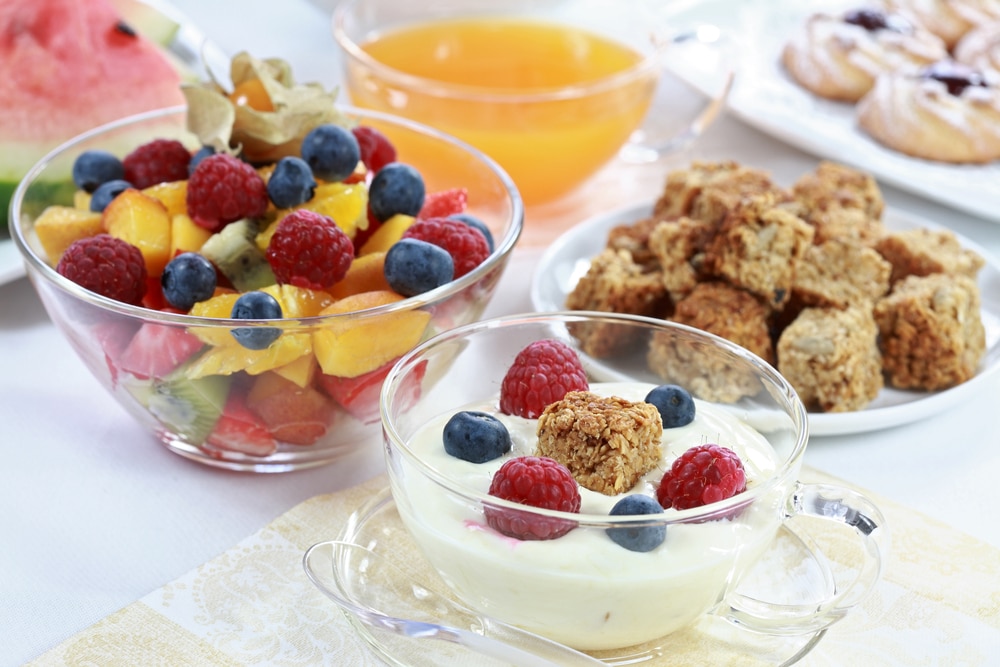Do you ever wake up, feeling like you’ve just fasted for hours, and then you’re hit with a frustrating surprise—your blood sugar levels are elevated? You might find yourself asking, *How can this be? I haven’t eaten anything since dinner!* This perplexing situation is known as the “dawn phenomenon,” a common experience for many, especially those with diabetes. If it only happens now and then, it’s typically no cause for alarm and won’t significantly affect your A1C levels (which give you an overview of glucose control over time). However, if this spike becomes a regular occurrence, it’s worth investigating further.
What Happens to Blood Sugar in the Morning?
As you snooze through the night, your body is busy prepping for the day ahead. Just before you wake, your liver releases glucose into the bloodstream. This is the dawn phenomenon kicking in—your body’s natural alarm system designed to give you a bit of energy to start your day. Now, for those without diabetes, this process is typically seamless. The pancreas springs into action, releasing insulin to help move that glucose into cells for energy.
But if you have diabetes, this system doesn’t always function as it should. Your body might not produce enough insulin, or, in some cases, not produce any at all. As a result, when you wake up and test your blood sugar, you might find those numbers running higher than you’d like, and that’s the dawn phenomenon once again making its presence known.
Why Is It Important to Have a Healthy Breakfast?
So, what does this mean for your morning routine? For those of you managing diabetes, it underscores the importance of a healthy breakfast. Starting your day right helps keep your blood sugar more stable, not only in the morning but throughout the day. Let’s face it: traditional breakfast foods like bagels, doughnuts, and fried treats might taste good, but they’re often packed with refined carbohydrates and sugars, leading to those dreaded spikes in blood sugar.
Instead, aim for a breakfast rich in protein, fiber, and healthy fats. This trio works wonders in slowing down carbohydrate digestion, helping to keep those morning levels in check.
A Dietitian’s Favorite Breakfast for Diabetes
As a registered dietitian, I’m a big fan of recommending Overnight Chia Oats for breakfast. What’s appealing about this meal is both its taste and its nutritional powerhouse profile. Combining oats and chia seeds, you can dive into a chilled bowl straight from the fridge. Not only are these oats delicious, but they’re loaded with fiber, good fats, and protein. This combo is the key to keeping blood sugar levels steady just when you need it the most.
And here’s the cherry on top: you can prepare multiple portions in advance! Having ready-to-eat breakfasts all week means you can grab and go without the morning chaos. Quite frankly, what could be easier?
How to Make Overnight Chia Oats
Ingredients (makes 1 serving):
– ⅓ cup old-fashioned oats
– 2 tablespoons chia seeds
– ¼ cup nonfat plain Greek-style yogurt
– ¼ cup frozen berries (raspberries work great)
– ⅔ cup unsweetened almond milk
– A dash of cinnamon
– 1 tablespoon chopped walnuts (for topping)
Directions:
1. In a jar or a container with a lid, mix together oats, chia seeds, yogurt, berries, almond milk, and cinnamon. Give it a good shake or stir to combine everything. Pop it in the refrigerator overnight (or at least for 2 hours, up to 5 days).
2. When it’s time to dig in, just grab it from the fridge and sprinkle some walnuts on top. Enjoy the refreshingly convenient breakfast!
Nutrition Facts
– **Calories:** 327
– **Carbohydrates:** 35g
– **Fiber:** 13g
– **Protein:** 15g
– **Total Fat:** 16g
Nutritional Benefits of Overnight Chia Oats
Let’s take a closer look at why Overnight Chia Oats are a stellar choice for anyone managing diabetes—or really, anyone who simply wants a nutritious, filling breakfast!
Packed with Protein
Each ingredient contributes to a solid protein punch! The nonfat Greek yogurt gives you about 6 grams, while the oats provide around 3.5 grams. Chia seeds add another 3.5 grams, almond milk chips in with 1 gram, and those walnuts on top boost the total with an extra gram. In a world where many breakfasts leave you hanging, this is one option that keeps you feeling satisfied—and more importantly, keeps your blood sugar levels in check.
Opting for this kind of breakfast could make a real difference in how you feel throughout the day. We know you’re busy, and meal prep can feel overwhelming, but this breakfast is a simple way to start your day in a healthy way. Imagine opening your fridge in the morning, grabbing this ready-to-eat delight, and knowing you’re giving your body what it needs, all while enjoying delicious flavors. That’s the kind of win we’re rooting for!Breakfast might just be the most important meal of the day, especially when it comes to managing your blood sugar. Starting your day off right can set the tone for how your body processes energy for the rest of the day. Imagine waking up and knowing that your breakfast is giving you a solid boost—both in terms of nutrition and in stabilizing your energy levels.
Let’s talk protein—specifically, how a hefty 15 grams at breakfast can seriously help you out. Protein doesn’t just keep you feeling full longer; it also gently slows down the digestion of carbohydrates. Think of it as a helpful speed bump, allowing your body to release glucose into the bloodstream at a steadier pace. This can make a world of difference for your energy levels, helping you avoid those familiar mid-morning crashes.
In addition to protein, healthy fats are another powerhouse component that can make your breakfast not just satisfying but blood-sugar-friendly too. By integrating sources of healthy fats into your meals, such as chia seeds and walnuts—together they bring about 15 grams of fat to the table—you’re once again slowing down the carb digestion process. These fats, particularly the omega-3 fatty acids found in chia seeds and walnuts, aren’t just good for your heart; they’re also anti-inflammatory, making them a top choice for a balanced meal. Imagine enjoying each mouthful knowing it’s working hard to support your heart and overall well-being.
Now, let’s look at carbohydrates. Oats often get a bad rep, but when you dig a little deeper, you’ll discover that they’re a nutritious whole grain packed with vitamins, minerals, and fiber. Yes, they have carbs, but when they’re combined with protein and healthy fats, they can be surprisingly friendly to your blood sugar. For example, in this breakfast revelation, oats make up about 18 grams of carbohydrates while chia seeds contribute 9 grams of fiber-rich carbs, plus Greek-style yogurt adds a couple of grams more. And don’t forget the fresh raspberries, which can add another 4 grams. This balancing act brings your total carb count to around 35 grams, a sweet deal when anchored by fibers and proteins.
Fiber, perhaps the less flashy superhero of your plate, is essential for managing blood sugar levels. It helps regulate the release of glucose and keeps your digestive system running smoothly. In the breakfast we’re discussing, oats, with their 3 grams; chia seeds adding a mighty 7 grams; and raspberries throwing in another 2 grams, contribute to a fiber total of roughly 13 grams. That’s a gut-friendly amount that not only keeps you feeling satiated but also supports overall health.
Beyond the ingredients on your plate, other strategies can help manage your blood sugar throughout the day. Think about your eating habits: when, how often, and even how much you’re eating can play pivotal roles in your energy levels.
Make it a priority to eat regularly. Smaller meals every three to four hours can keep you from feeling ravenous, which often leads to overeating that spikes your blood sugar levels. Portion control is key! By maintaining consistent meal times, you’re less likely to allow hunger to throw you off course.
And let’s not forget the power of movement. Physical activity is a game changer for keeping your blood sugar regulated. When you move, your muscles use up glucose for fuel. A simple post-meal walk can work wonders for keeping your blood sugar in check. If you’re able, aim for at least 150 minutes of moderate-intensity exercise weekly, such as five 30-minute walks or six 25-minute workout sessions. The American Diabetes Association even recommends this as a great way to support your blood sugar management.
In short, for a breakfast that propels you toward balanced blood sugar levels, aim for a thoughtful mix of fiber-rich whole grains, protein, and healthy fats. Try something like Overnight Chia Oats, which can nourish you in the morning and help keep your energy levels steady all day long. There’s power in what you choose to put on your plate, and the right breakfast can set you on a path to feeling great, both mentally and physically.
Image Source: Ingrid Balabanova / Shutterstock































